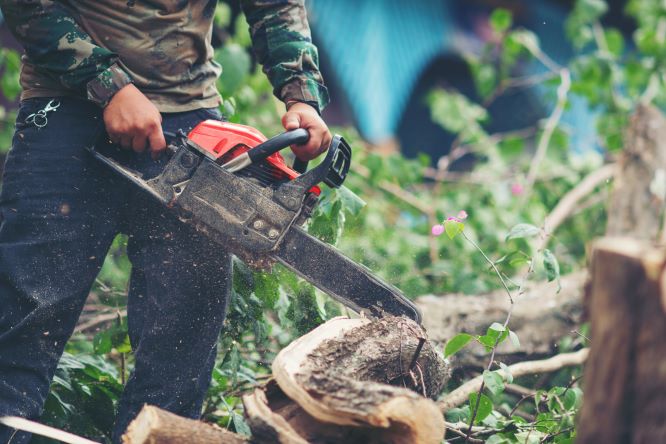Keeping your tools in peak working condition is key for reliable performance, safety, and longevity. If you own a Stihl mo39 chainsaw or trimmer, you may have noticed an issue where gas leaks when tilted. This problem can be frustrating, messy, and even dangerous if left unchecked. Fortunately, understanding the root causes and how to fix them can save you time, money, and potential hazards.
In this article, we’ll explore why mo39 Stihl gas leaks when tilted, dive into the most common causes, and provide a detailed, step-by-step guide to resolve the issue. Whether you’re a seasoned professional or a weekend DIY enthusiast, this post will help you diagnose, fix, and prevent gas leaks in your Stihl mo39.
Quick Answer Summary
If your mo39 Stihl gas leaks when tilted, it’s typically due to issues such as cracked fuel lines, faulty grommets, a damaged gas cap, or problems with the carburetor or tank vent. These leaks occur because tilting the tool shifts fuel to areas where weaknesses in the system are exposed. By inspecting and replacing damaged components, you can restore your tool’s functionality and prevent future leaks.
Why Address Gas Leaks Immediately
Gas leaks in your Stihl mo39 aren’t just an inconvenience—they can pose significant safety and environmental risks. Here’s why you should address this issue promptly:
- Fire Hazards: Gasoline is highly flammable, and leaking fuel increases the risk of fire, especially in hot environments or when working near sparks.
- Health Risks: Prolonged exposure to gasoline vapors can harm your health, causing symptoms like headaches, dizziness, or nausea.
- Environmental Concerns: Fuel leaks contribute to pollution, harming soil and water supplies.
- Tool Longevity: Leaks can lead to poor performance, reduced fuel efficiency, and long-term damage to the engine.
Ignoring gas leaks may result in expensive repairs or even accidents, so it’s crucial to identify and fix the issue as soon as possible.
Understanding the mo39 Stihl Gas System
To troubleshoot effectively, it’s helpful to understand how your Stihl mo39’s gas system works. The fuel system consists of several parts, each playing a role in delivering fuel to the engine:
- Fuel Tank: Stores gasoline and connects to the fuel line.
- Fuel Line: Transports fuel from the tank to the carburetor.
- Carburetor: Mixes fuel and air in the correct ratio for combustion.
- Tank Vent: Prevents pressure buildup in the fuel tank.
- Grommets and Seals: Ensure tight connections and prevent leaks.
When the tool is tilted, fuel shifts within the tank and lines, which can expose weaknesses in the system. This is why leaks often occur only when the tool is not upright.
Common Symptoms of Gas Leaks When Tilted
If your mo39 Stihl gas leaks when tilted, you may notice the following symptoms:
- Visible Leaks: Fuel dripping from the carburetor, gas cap, or vent tube.
- Strong Gasoline Smell: A persistent odor of fuel, even when the tool isn’t in use.
- Performance Issues: Difficulty starting, poor engine performance, or stalling.
- Fuel Marks: Stains or wet spots on the tool or storage area.
These symptoms indicate a problem with the fuel system that requires inspection and repair.
Most Common Causes of Gas Leaks When Tilted
1. Faulty Fuel Lines
- Cause: Fuel lines can crack, harden, or become loose over time, especially when exposed to ethanol-blended fuels.
- Symptoms: Leaks near connections or along the length of the hose.
- Solution: Inspect for cracks or brittleness and replace damaged fuel lines.
2. Worn or Damaged Grommets and Seals
- Cause: The rubber grommet sealing the fuel line to the tank can degrade, allowing fuel to seep out.
- Symptoms: Leaks around the base of the tank.
- Solution: Replace the grommet with a new one designed for your Stihl model.
3. Issues with the Gas Cap
- Cause: A damaged gas cap gasket or improperly sealed cap can allow fuel to escape.
- Symptoms: Leaks at the cap when the tool is tilted.
- Solution: Replace the gas cap or gasket if worn.
4. Carburetor Problems
- Cause: A flooded carburetor or worn gaskets can cause fuel to leak through the air filter or carb throat.
- Symptoms: Wetness around the carburetor or air filter.
- Solution: Rebuild or replace the carburetor.
5. Faulty Tank Vent
- Cause: A clogged or damaged tank vent can cause pressure buildup, forcing fuel out.
- Symptoms: Leaks from the vent tube when tilted.
- Solution: Clean or replace the vent.
6. Fuel Filter Issues
- Cause: A loose or damaged fuel filter connection can allow fuel to leak.
- Symptoms: Leaks at the bottom of the fuel tank.
- Solution: Replace the fuel filter.
7. Primer Bulb Damage
- Cause: A cracked or hardened primer bulb can leak fuel when pressed or tilted.
- Symptoms: Wetness around the primer bulb.
- Solution: Replace the primer bulb.
How to Diagnose: Step-by-Step Guide
Step 1: Prepare for Inspection
- Ensure the tool is off and cool.
- Work in a well-ventilated area away from open flames.
- Wear gloves and safety glasses.
Step 2: Inspect the Fuel System
- Check the fuel tank for cracks or visible damage.
- Examine fuel lines for brittleness, cracks, or leaks.
- Inspect the grommets and seals for wear.
- Test the gas cap for a secure seal.
- Check the carburetor for wetness or residue.
- Inspect the primer bulb and tank vent for damage.
Step 3: Perform a Tilt Test
Tilt the tool in various directions and observe where fuel leaks. This will help pinpoint the source of the problem.
Step-by-Step Fixes for Each Cause
Replacing Fuel Lines
- Disconnect the old fuel line.
- Install a new line, ensuring tight connections.
- Test for leaks.
Gas Cap and Gasket Replacement
- Remove the old gas cap.
- Install a new gasket or cap.
- Tighten securely.
Grommet and Seal Replacement
- Remove the old grommet.
- Clean the area.
- Insert a new grommet.
Carburetor Rebuild
- Disassemble the carburetor.
- Clean all components.
- Replace gaskets and needle valves.
Tank Vent Replacement
- Locate the vent.
- Clean or replace it.
- Reassemble and test.
Primer Bulb Replacement
- Remove the damaged bulb.
- Install a new one.
- Test for leaks.
Real-World Case Studies
Many Stihl users have faced and resolved this issue. For example:
- Case 1: A landscaper noticed leaks from the carburetor and replaced the gaskets, solving the problem.
- Case 2: A homeowner found a cracked primer bulb and replaced it, restoring the tool’s functionality.
Learning from others’ experiences can save time and frustration.
Preventative Maintenance Tips
- Inspect your tool regularly for wear and tear.
- Use ethanol-free or stabilized fuel.
- Replace fuel lines, filters, and grommets periodically.
- Store your tool upright to prevent unnecessary stress on the fuel system.
Genuine vs. Aftermarket Parts: What Should You Choose?
- Genuine Parts: Guarantee compatibility and durability but may cost more.
- Aftermarket Parts: More affordable but vary in quality.
Stihl recommends using genuine parts to ensure optimal performance.
When to Seek Professional Help
If you’re unable to identify or fix the problem, visit an authorized Stihl service center. Professional technicians can diagnose and repair complex issues, ensuring your tool remains in top condition.
Frequently Asked Questions
Can a gas leak damage my engine?
Yes, fuel leaks can cause poor performance, reduced efficiency, and long-term damage.
Will Stihl warranty cover this issue?
Check your warranty terms, as some fuel system issues may be covered.
Is this issue specific to the mo39 model?
While the mo39 is prone to this issue, other models may experience similar problems.
Troubleshooting Checklist
- Inspect the fuel tank, lines, and grommets.
- Check the gas cap and carburetor.
- Perform a tilt test.
- Replace damaged components as needed.
Conclusion
If your mo39 Stihl gas leaks when tilted, the problem likely lies in the fuel system. By diagnosing and addressing issues like faulty fuel lines, grommets, or carburetor components, you can restore your tool’s performance and prevent future leaks. Regular maintenance and proper storage are key to keeping your Stihl mo39 running smoothly.



